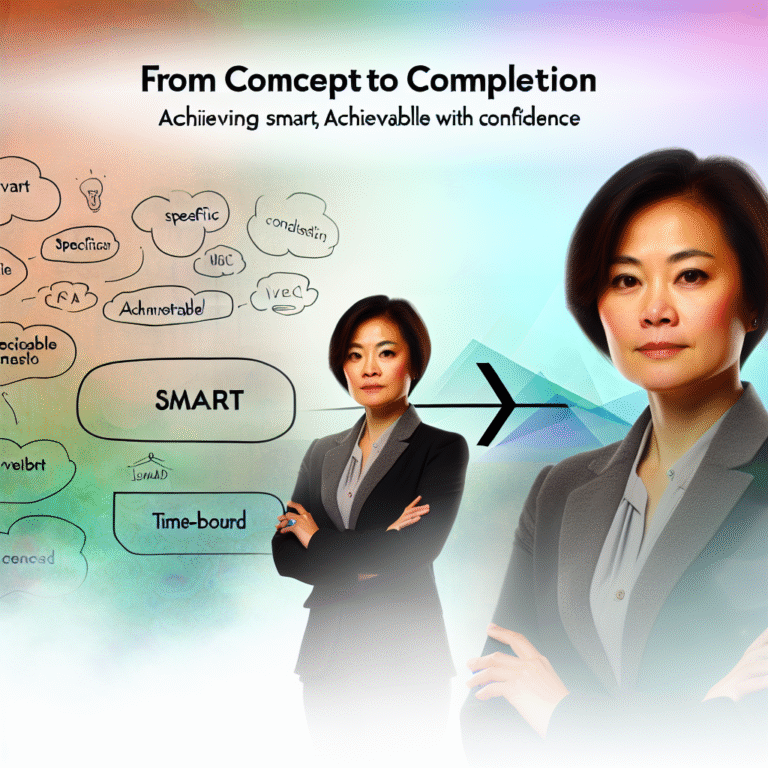The Essential Science of Growth: Understanding Mindset for Personal Transformation
Introduction
In an age where change is the only constant, understanding how our mindset shapes our capacity for personal transformation is more crucial than ever. Are you feeling stuck in your career, relationships, or personal life? The Science of Growth: Understanding Mindset for Personal Transformation offers invaluable insights into how shifting your mindset can catalyze remarkable changes. Imagine waking up each day with renewed energy and determination—this isn’t just wishful thinking; it’s possible when you grasp the science behind mindset.
This article serves as your ultimate guide to mastering your mindset for growth. We’ll explore different types of mindsets, the psychological underpinnings of behavior change, and provide case studies that elucidate real-world applications of these concepts. By the end of this deep dive, you’ll not only understand the significance of personal transformation but also develop actionable strategies to implement in your daily life.
The Foundation of Mindset
Defining Mindset: Fixed vs. Growth
At its essence, a mindset is an ingrained belief system concerning your abilities and potential. Psychologist Carol Dweck famously categorizes mindsets into two primary types: fixed and growth.
Fixed Mindset: Individuals with a fixed mindset believe their abilities, intelligence, and talents are static. They often view failure as a reflection of their self-worth, leading to avoidance of challenges.
- Growth Mindset: Conversely, those with a growth mindset embrace challenges, viewing failures as opportunities for growth. They are more likely to persevere in the face of difficulties, which opens avenues for personal transformation.
Understanding the dichotomy of these two mindsets is foundational to The Science of Growth: Understanding Mindset for Personal Transformation.
The Psychological Underpinnings
Mindset isn’t just a casual concept; it has psychological roots that influence behavior. The field of neuroscience has revealed that our brains are neuroplastic, meaning they can change and adapt throughout our lives. This adaptability is closely linked to mindset—believing in your potential to grow can actually foster growth on a neurological level.
This chart illustrates how our brains can physically change with different types of challenges.
Case Study: From Fixed to Growth
The Story of Thomas Edison
Perhaps one of the most famed examples of a transformation from a fixed to a growth mindset is Thomas Edison. Initially, many viewed him as a failure due to repeated setbacks in his experiments. However, Edison maintained a growth mindset, stating, “I have not failed. I’ve just found 10,000 ways that won’t work.” His perseverance and commitment to learning propelled him forward and led to groundbreaking inventions like the light bulb.
Analysis of the Impact
Edison’s journey exemplifies The Science of Growth: Understanding Mindset for Personal Transformation because it highlights how a shift in mindset can lead to extraordinary achievements. By reframing failure as a stepping stone rather than a barrier, individuals can unlock their true potential.
Tools for Transforming Your Mindset
Identifying Your Current Mindset
Before embarking on personal transformation, it’s essential to assess your current mindset. Ask yourself reflective questions about your beliefs regarding intelligence, skills, and the nature of challenges.
To summarize:
| Mindset Type | Beliefs | Approach to Challenges |
|---|---|---|
| Fixed Mindset | Abilities are unchangeable | Avoid challenges |
| Growth Mindset | Abilities can be developed | Embrace challenges |
Techniques for Cultivating a Growth Mindset
Adopt Lifelong Learning: Committing to continuous education and skill acquisition can drastically shift your mindset.
Practice Self-Compassion: Understanding that everyone experiences setbacks can alleviate the pressure you place on yourself.
Reframe Negative Thoughts: Instead of thinking, "I can’t do this," try reframing to, "I can learn how to do this."
Surround Yourself with Growth-Minded Individuals: Your social circle can significantly influence your mindset. Engage with those who inspire and support you.
- Set Realistic Goals: Focus on small, achievable milestones to foster a sense of accomplishment.
The Neuroscience of Mindset Change
How Our Brains Adapt
Neuroscientific research shows that our brains can rewire in response to new experiences. The Science of Growth: Understanding Mindset for Personal Transformation involves training our brains to respond differently to challenges, stresses, and setbacks.
Myelination: When you practice a skill, the neural pathways involved become myelinated, which means they become quicker and more efficient. The more you engage in growth-oriented activities, the stronger those connections become.
- Mirroring: Engaging in positive social interactions releases neurotransmitters like oxytocin, which enhances our willingness to take risks and embrace challenges.
Case Study: J.K. Rowling
The Evolution of a Literary Icon
J.K. Rowling, the author of the beloved Harry Potter series, faced numerous rejections before achieving literary success. She describes her early life as fraught with challenges, including poverty and depression. Yet, she maintained a growth mindset, viewing her setbacks as part of her journey. In interviews, she often shares how writing not only transformed her life but also became a therapeutic outlet.
Analysis
Rowling’s story epitomizes The Science of Growth: Understanding Mindset for Personal Transformation by illustrating how persistence, guided by a growth mindset, can lead to not just personal change but worldwide cultural impact.
Strategies for Implementation
Create a Personal Development Plan
To make the learning process actionable, consider developing a personalized growth plan based on your goals, interests, and challenges. This plan should be adaptable, incorporating the lessons learned from failed attempts as much as successes.
Track Your Progress
Utilize journals or digital tools to log milestones. Tracking progress helps reinforce the belief that you are capable of transformation.
Example Table for Personal Growth Tracking:
| Date | Goal/Skill | Progress | Reflections |
|---|---|---|---|
| Jan 1 | Start gym | Attended 3 times | Feel more energetic |
| Jan 5 | Read leadership book | Finished first two chapters | Learned about team motivation |
The Power of Community
Building a Supportive Network
Your environment can play an integral role in your transformation. Surrounding yourself with a community that encourages growth enhances your motivation and reinforces positive behaviors. Group activities like workshops, seminars, or support groups can provide the communal strength needed for personal change.
Conclusion
The journey of personal transformation begins with understanding the significance of mindset. As you explore The Science of Growth: Understanding Mindset for Personal Transformation, remember that change is possible at any stage of life.
You have the power to cultivate a growth mindset that not only fosters your personal development but inspires those around you. As you venture forth, keep an open mind, embrace challenges, and remember that every small step contributes to greater progress.
FAQs
1. What is the difference between a fixed mindset and a growth mindset?
A fixed mindset believes abilities are static, while a growth mindset embraces challenges and sees failures as opportunities for development.
2. How can I cultivate a growth mindset?
You can cultivate a growth mindset by seeking lifelong learning opportunities, practicing self-compassion, and reframing negative self-talk.
3. Can my mindset influence my relationships?
Absolutely! A growth mindset fosters more resilient, supportive relationships by promoting open communication and shared growth.
4. What role does failure play in personal transformation?
Failure, when viewed through a growth mindset, becomes a crucial element of learning and growth, paving the way for future successes.
5. How long does it take to develop a growth mindset?
The timeline varies for everyone, but continuous practice and commitment can lead to a growth mindset over weeks or months.
By engaging in strategies and fostering a supportive environment, you can embark on the powerful journey of The Science of Growth: Understanding Mindset for Personal Transformation. Remember, change is a process, and every effort counts—so start today!














